Growing plants from seed is a great way of filling your borders, allowing you to grow loads of your favourite flowers for peanuts. Sow sparingly though; sprinkle a whole packet of 500 Antirrhinum seeds in a tray of compost and you’ll come to regret it come pricking out and potting on time.

Mind you, not all of the seeds you sow will make it to flowerhood. There are always the odd no-shows as well as casualties along the way. You’ll probably find yourself offering words of encouragement to ailing seedlings or uttering dark mutterings as you wander around the garden or greenhouse at night, seeking out slugs and snails that have taken a fancy to this and that. But come the summer you’ll experience an immense feeling of satisfaction when carefully nurtured tiny shoots of green have grown into fully fledged flowering plants.
The sight of newly emerging seedlings never gets old. It’s both wondrous and exciting and each spring I’ll try growing something I’ve not tried before. Yet there are several plants I sow from seed every year, the ‘old reliables’ that are long flowering, insect friendly and easy to grow. What was that? “What are these long flowering, insect friendly and easy to grow ‘old reliables’ of which you speak?” I’m glad you asked.
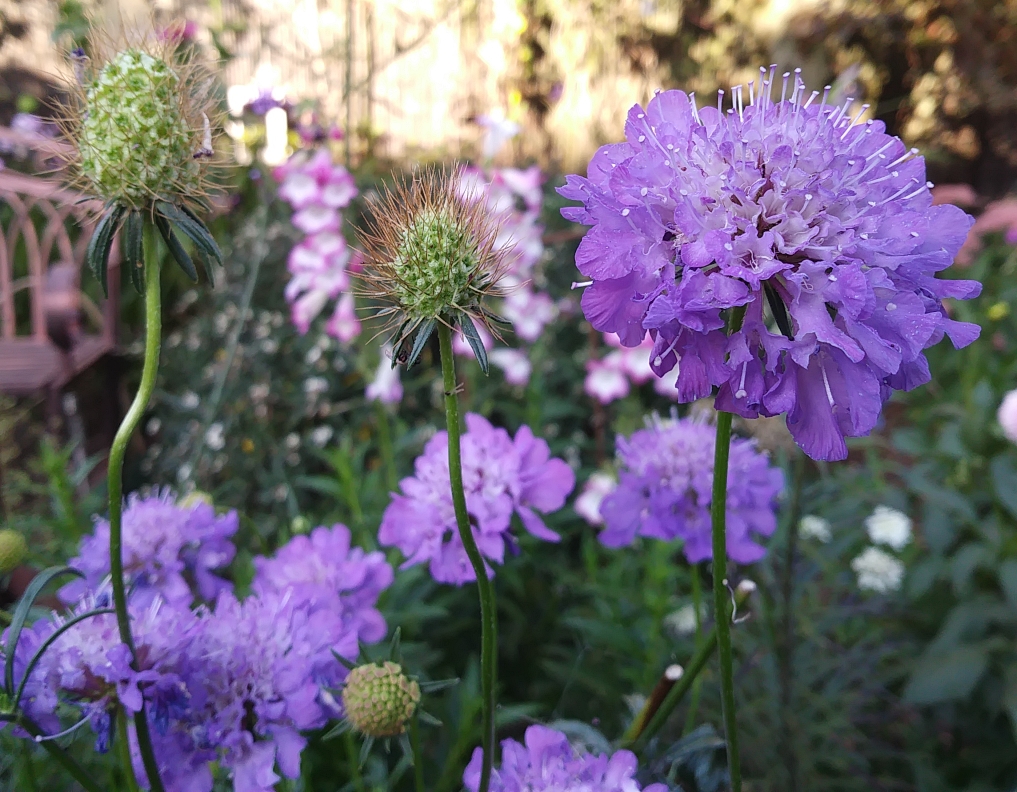
One such old reliable is the hardy annual Scabious. They come in a variety of colours (including lilac, red, white and pink) and will flower throughout the summer and autumn with regular dead-heading. The slugs and snails tend to leave them alone (always a bonus) and some will often survive a winter or two, forming bigger plants the following year if chopped back in the spring.

Now I must admit it took me a while to discover the joys of Cosmos. They’re speedy germinators, have fine, feathery foliage that is generally ignored by gourmet gastropods, and go full-on-floriferous from around July all the way through to late autumn with regular dead-heading.
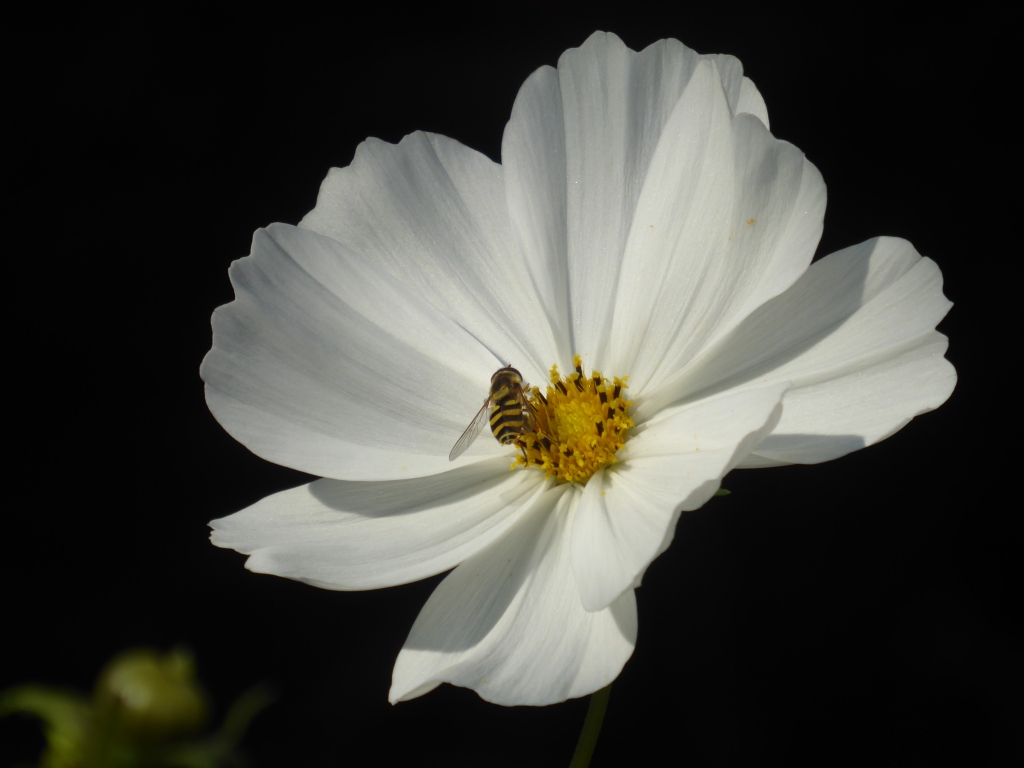
These annuals come in a variety of colours, flower shapes and sizes and do well in borders or in pots on a sunny patio. Just remember to pinch out the tops of leggy seedlings to create bushier plants.
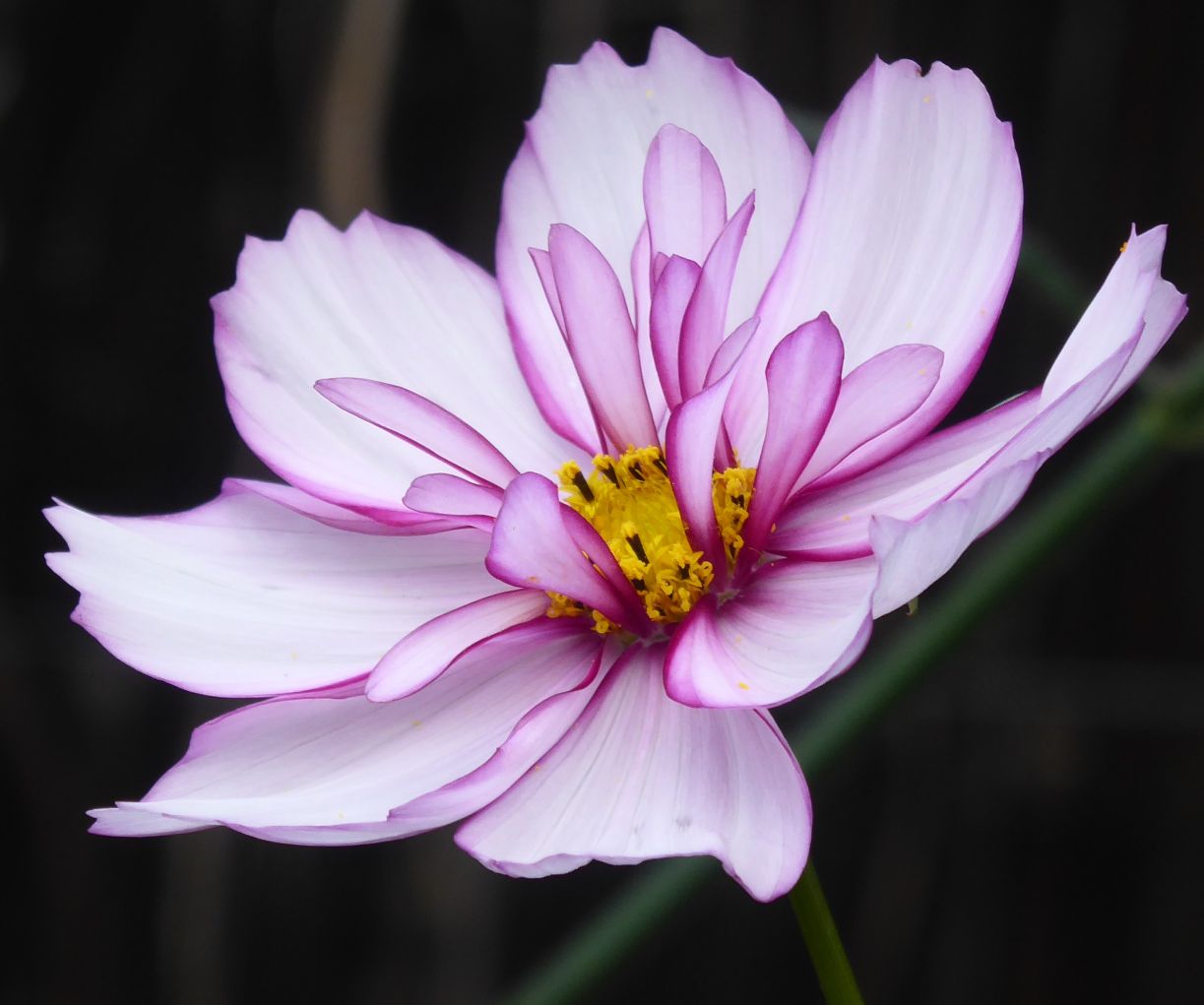
Cosmos ‘Fizzy Rose Picotee’
Up next, Calendula, an easy and quick to grow hardy annual that does best in a sunny position, flowering throughout the summer and autumn.
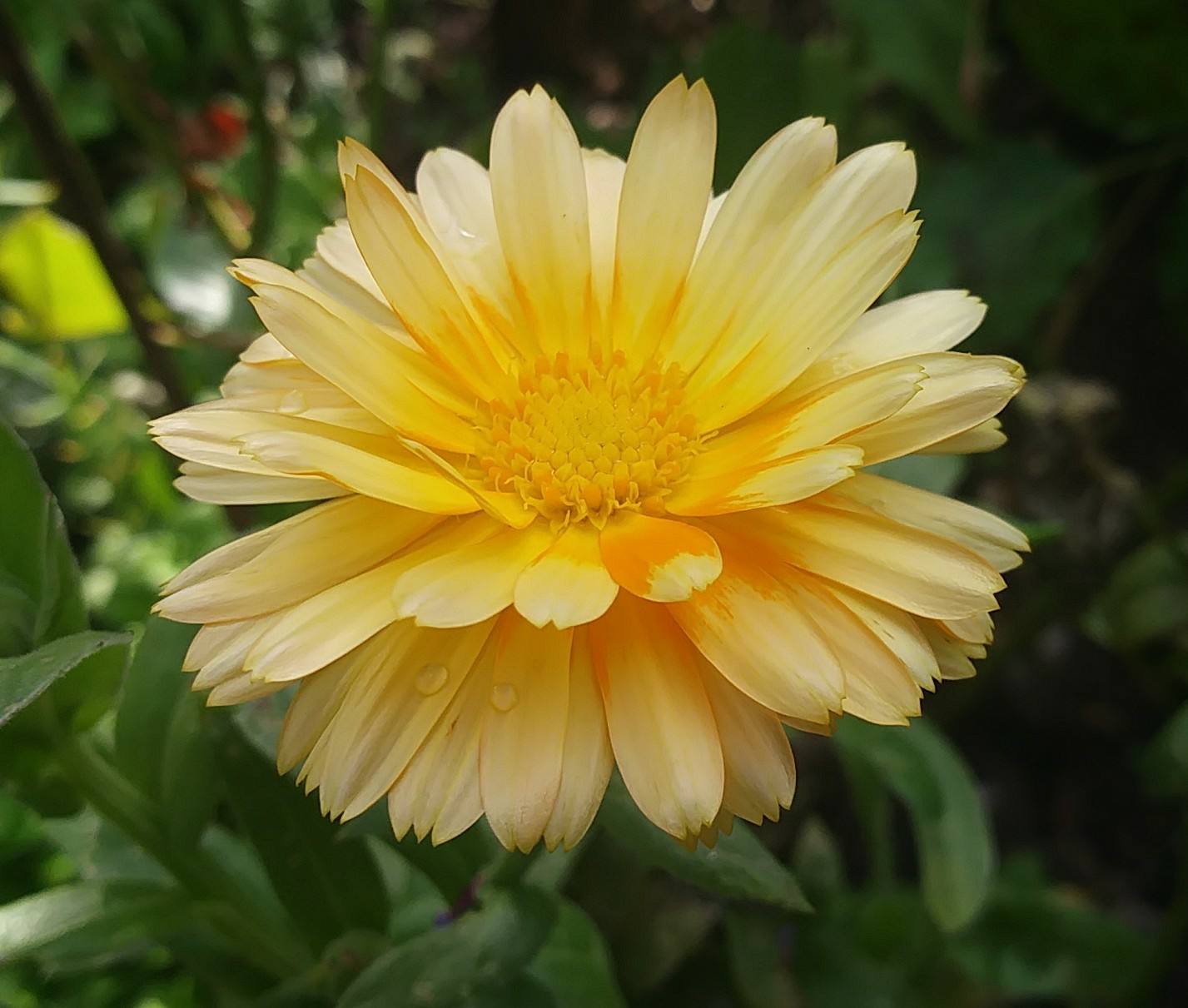
Calendula ‘Lemon Cream’
And they don’t just come in orange these days, oh no. Another favourite with pollinators, start them off in pots or sow straight into the ground in the spring and if you’re lucky you may find they self-seed the following year. Talking of self-seeders…
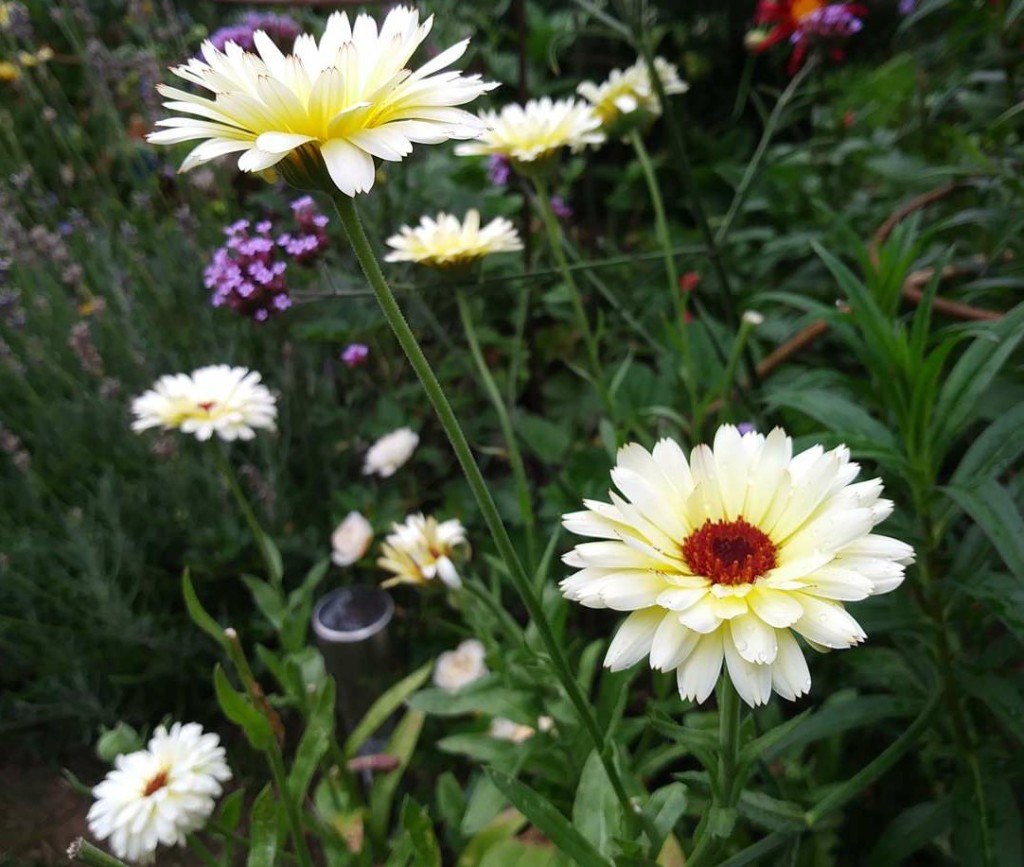
There are some flowers that you will only ever need to sow once, prolific self-seeders that will do the work for you in subsequent years. I sowed a packet of Forget-me-nots straight into the borders way back in 2012 and they’ve spread themselves here, there and everywhere ever since. A biennial, sow them outdoors in early summer and you’ll have flowering plants come spring.

Forget-me-nots
They’re easy enough to pull up to keep them under control, but their small blue flowers mingle rather nicely with most plants and they’re a big favourite of the bee flies.
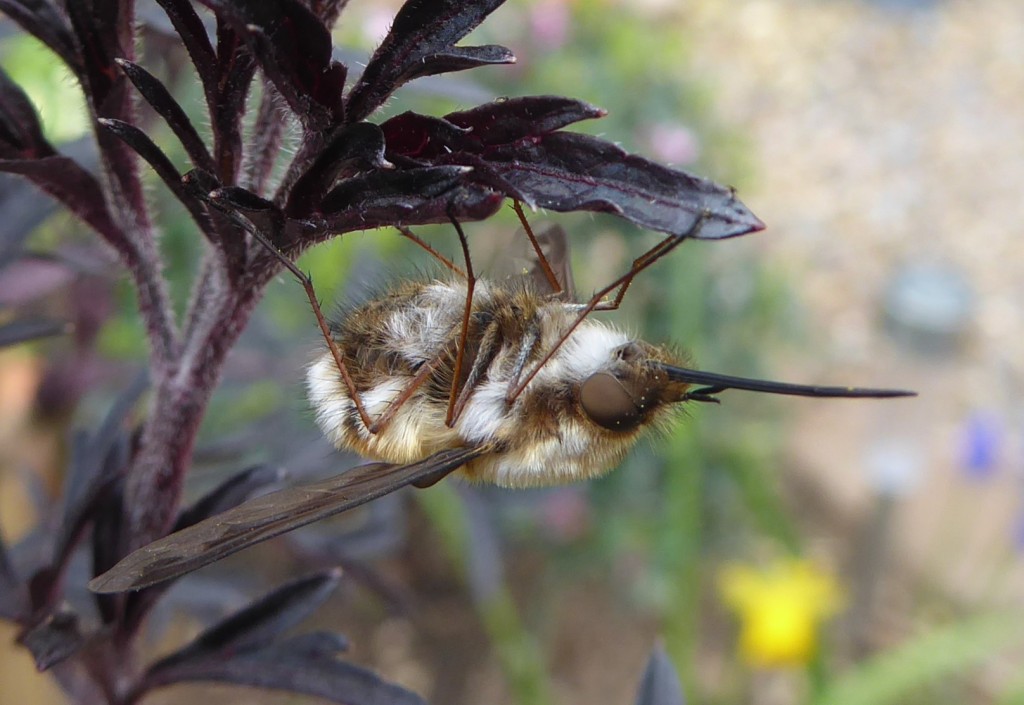
Another self-seeder that just gets on with it is Honesty (Lunaria). Sow this shade tolerant biennial in early summer and you’ll have white or purple flowering plants in the spring and pretty silvery paper disk-like seed heads by winter. It’s another good mingler, though like the Forget-me-nots, you may wish to pull out the odd plant to curb any attempts at world domination, perhaps potting some up for family and friends.
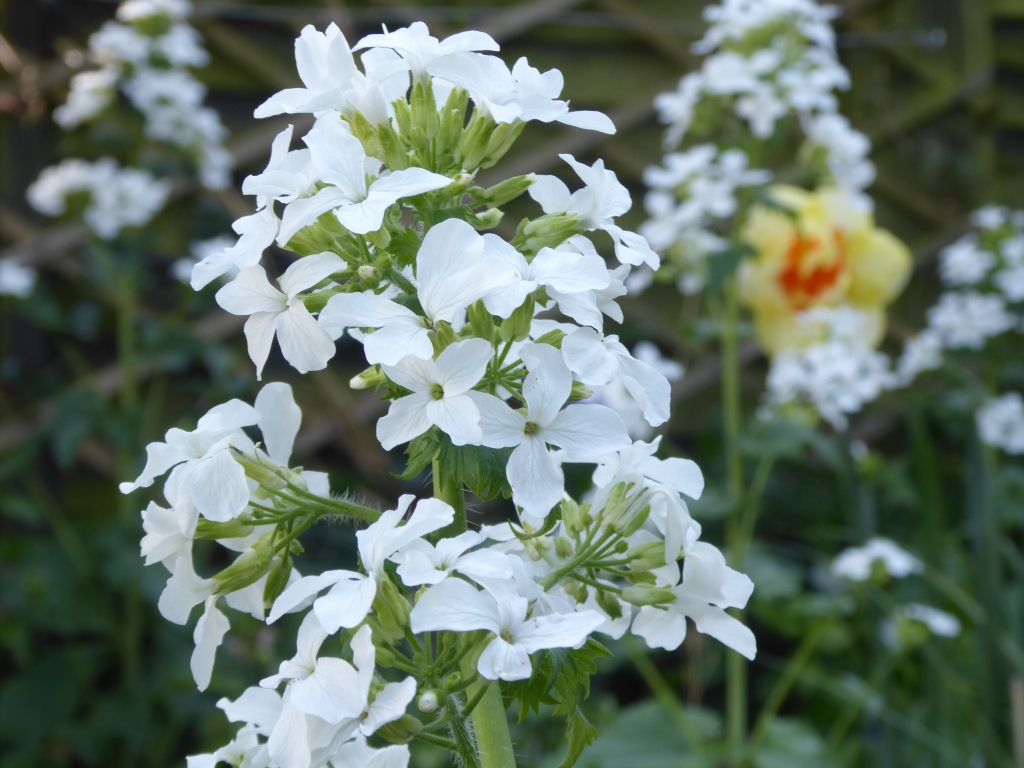
Honesty flowers 
Honesty seed heads
And finally… Sometimes you don’t want your flowers subtle. Sometimes you want bright and bold. Summer flowering California Poppies are another of those sow-them-once-and-they’ll-probably-be-in-your-garden-for years-to-come plants. Chop them back when they start to get a little leggy and they’ll flower again later in the year. I often plonk a few of their cheerful blooms in a bud vase to provide some indoor floral sunshine and never grow bored of watching their petals close up in the evenings and unfurl in the mornings, even indoors. These cheerful plants will usually last a few years but more often than not you’ll find their distinctive grey-green feathery leaved offspring growing close by.

California Poppy
Keen to discover more gardening tips and join in with the virtual Spring Flower Show (Monday 3rd May until Sunday 9th May)? Then head on over to Tweeters Gardening and follow the #TweetersFlowerShow hashtag.
Lots of useful information there, plus I now encouraged to try Forget-me-nots! Calendulas are one of my favourite annuals, and luckily they grow well for me.
LikeLiked by 1 person
Thank you. Forget-me-nots are lovely. They can go a little mad but I wouldn’t be without them!
LikeLiked by 1 person
I have never been one for growing annual flowers – too much work for the results when the same work could give you perennials! We do grow Ammi majus and cosmos every year and an odd few others, changing as the whim takes us. We grew large amounts from seed when we came to this garden first. It was too big for us to fill by buying plants – too expensive – so we grew loads of perennials and planted in huge numbers, drifts of 50 – 100, and the thinned them out as we introduced different varieties. It’s the very best enjoyment in gardening, growing from seed, and it does age me a bit to see fine mature trees in the garden that I grew from seed!
LikeLiked by 2 people
I should try growing more perennials from seed. My problem is I’m a bit impatient and want guaranteed flowers (well, sort of guaranteed flowers) that same year. I’m hoping a ‘True Blue’ penstemon I grew from seed last year will flower this year.
LikeLiked by 1 person
Nice article and thank you for the comment regarding slugs.
LikeLiked by 1 person
Bloomin’ things. Thank you.
LikeLike
I’m growing Calendula and Strawflowers for the first time this year; they’ve all germinated but look quite small still…. I’ve not been a fan of Cosmos, but your photo of Cosmos ‘Fizzy Rose Picotee’ has me re-thinking that!
LikeLiked by 1 person
Strawflowers! That’s what I was intending to try growing from seed this year and completely forgot. I must remember next year. ‘Fizzy’ is rather nice.
LikeLike
Reblogged this on Wonders of Wandering.
LikeLiked by 1 person
Lovely informative post. I’m not too good at seed sowing, but have attempted some this year, my problem comes after germination and keeping them moist but not wet and not damping off. And now I have to decide when it is safe to plant them outdoors! Interesting that you say slugs don’t care for Cosmos, because they, or the snails, certainly liked my tiny seedlings! Calendula and Nasturtiums are easy, I just sow direct into the soil, as are Californian Poppy and Cerinthe major Purpurascens . Which are supposed to self-seed so I am hoping some appear this year as I don’t have any seeds. The flower show sounds like fun, (I am not on Twitter so can’t join) and I hope to see some info about bulbs tomorrow!
LikeLiked by 1 person
Thank you! Thankfully the slugs and snails have never gone for my cosmos – perhaps the zinnia distract them! I tend to try and harden seedlings off too quickly in an attempt to clear window sills and the mini greenhouse for other stuff. Tray modules are also baffling – the compost in some modules stay moist whereas it dries up really quickly in others.
LikeLiked by 1 person
I have sown Zinnia in modules so they can go straight into pots/garden. But when? I can see little white roots appearing through the coir. I’m thinking maybe pots so I can keep them off the ground.
LikeLiked by 1 person
I plant the zinnia after the risk of frost has passed and the plants are about 6 inches or so tall. I had a bad time with them last year. Many got eaten and some simply died for no good reason (they hate root disturbance but I don’t think it was that). As I type this I’m wondering why I’m bothering with them. Ah yes, late colour and lovely flowers!
LikeLiked by 1 person
Enjoyed this post, informative and great photos. Like you I have been bitten by the seed sowing bug. I’m never without Calendulas but haven’t seen either of those lovely varieties you have – let me know if you fancy a seed swap, I can offer C. Touch of Red Buff which I’m trying for the first time this year, still have a few seeds left in the pack. You’ve convinced me that I must try California poppies in the vibrant border, probably next year. I wasn’t sure if they’d do well in clay though…
LikeLiked by 1 person
Thank you. A seed swap sounds good. I’ll have a look and see if I have any left over seeds in the packets or failing that I’ll try saving some later in the year. Red Buff sounds rather nice. The California poppy comes up in one of my particulary clayey borders.
LikeLiked by 1 person
Great, thanks, that would be brill. 🙂 That’s surprising to me but v good news re California poppies and clay.
LikeLiked by 1 person
Hi Sel. I’ve sent an email regarding the calendula seeds via the contact form of your blog site. If it hasn’t made it let me know and I’ll try again.
LikeLiked by 1 person
Oh thank you, I didn’t see it, let me have a look to see if it ended up in the black hole of the Promotions folder somehow.
LikeLiked by 1 person
Found it, it was buried! Have replied, thank you.
LikeLiked by 1 person